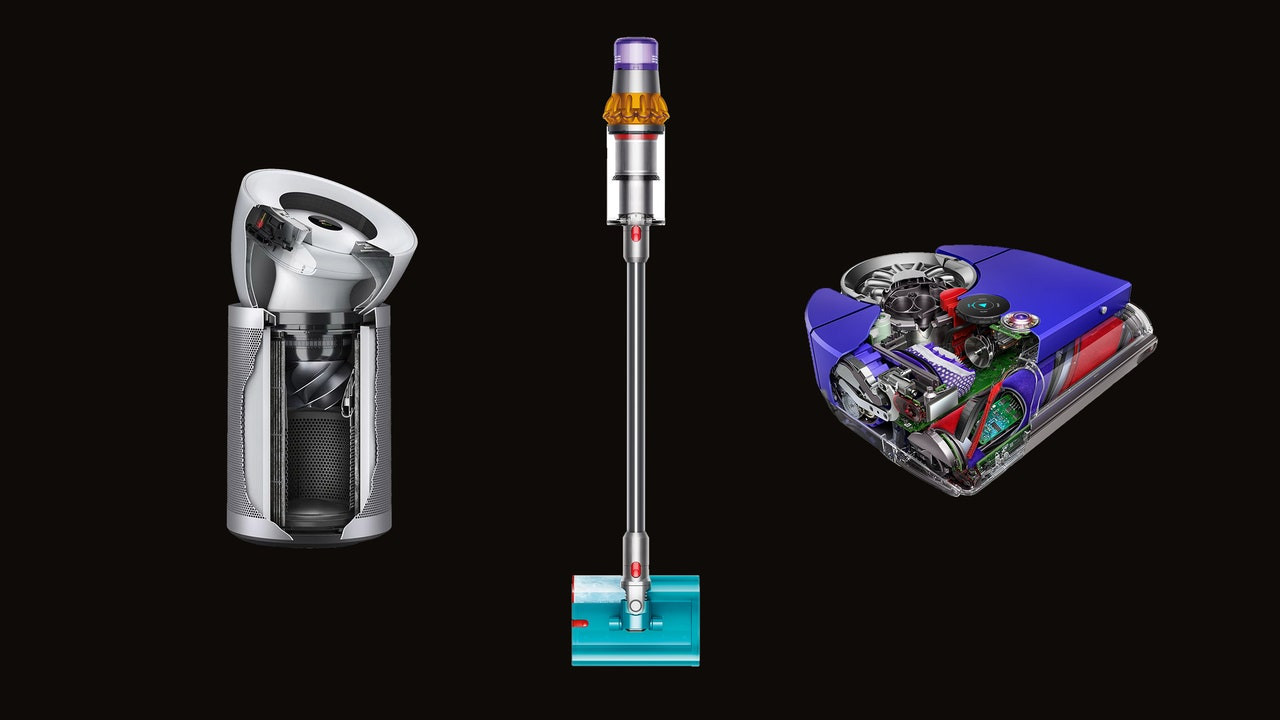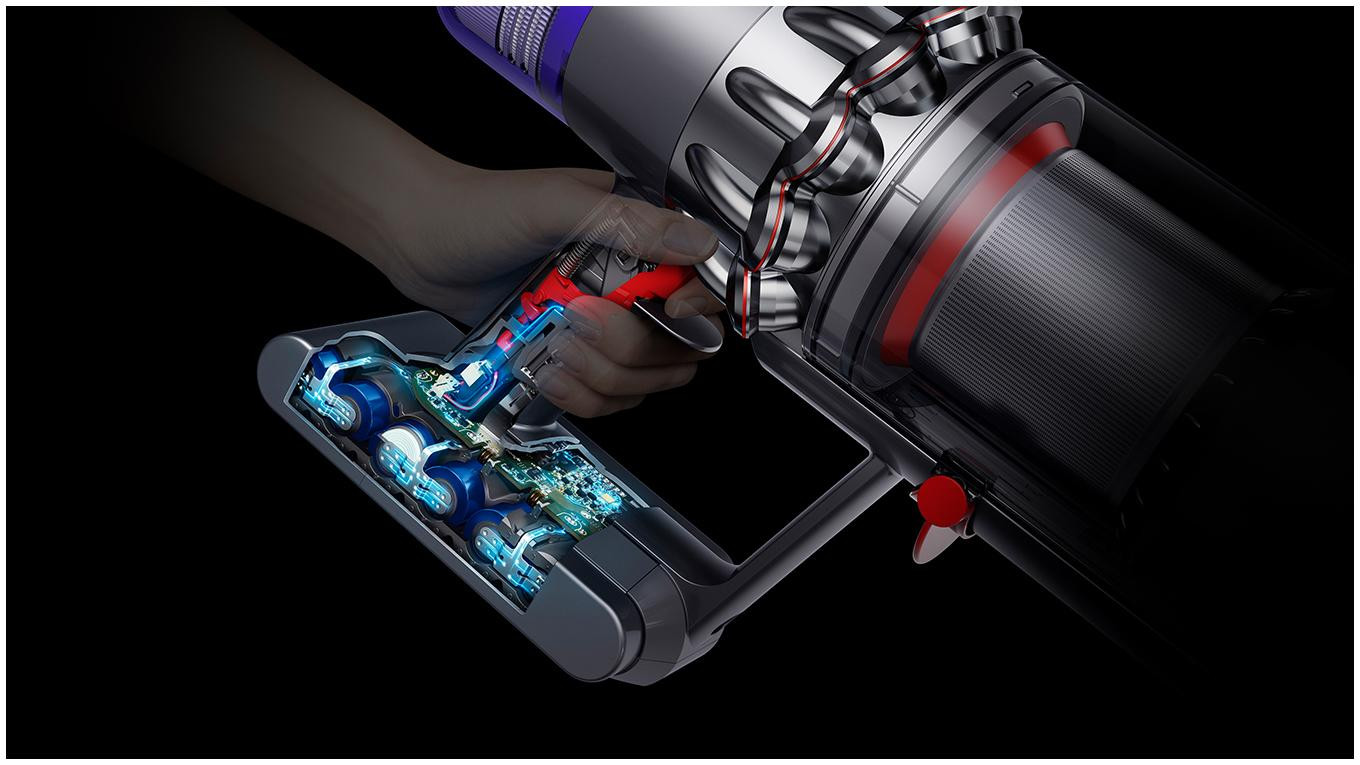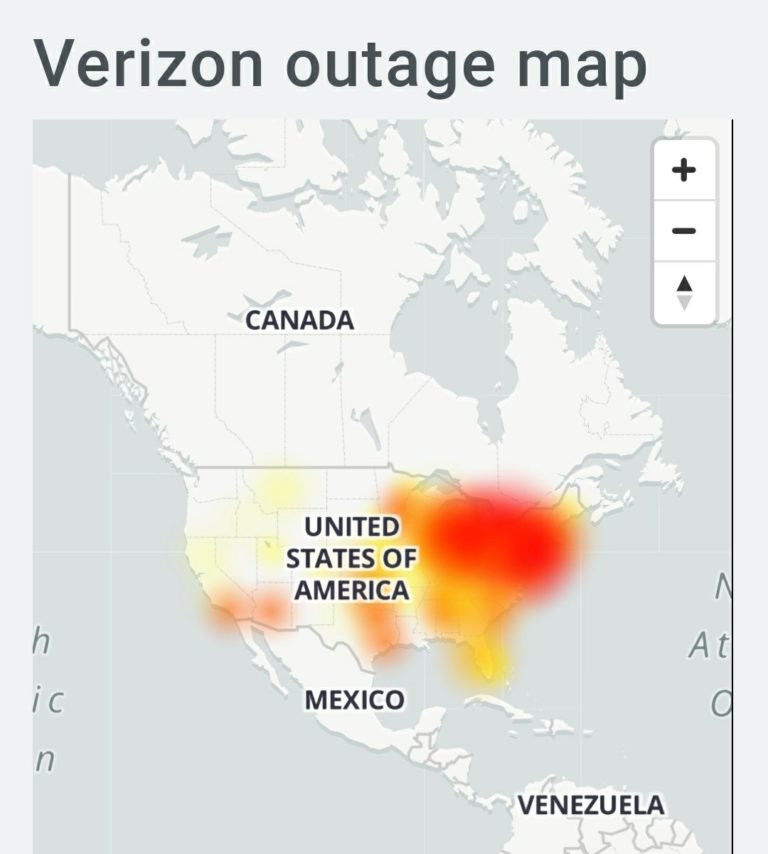Sayonara, Saxony. Ta-ta, Twist Pile. There is a domestic revolution afoot – or underfoot – because carpets have fallen out of fashion. Recent research by Dyson found three-quarters of UK households now have either all, or some, hard floors. The minimalist Scandinavian aesthetic has helped drive the trend, as well as attractive new vinyl, tiled and wooden offerings that are far more stylish than dowdy lino. Cheaper underfloor heating means carpets are no longer as sought-after for their warmth, nor are they seen as a hygienic option. Little wonder, perhaps, that the style-conscious middle classes are ripping out carpets in their droves.
But caring for hard floors is not straightforward either, as anyone who has dragged a mop and bucket around their kitchen leaving a trail of dirty water in their wake will know. Over-drench a wood floor – the most popular choice of hard flooring – and you risk rot and discolouration. At least that's my excuse for the fact that the engineered wood floor in my home, assaulted daily by a muddy labrador, clumsy children and sloppy cooks, looks more dirt brown than honeyed oak, while the cream tiles in our kitchen fare little better.
This month, Dyson launched its first hard-floor cleaner: a £599.99 electric mop. But now Dyson claims to have a solution – albeit one that's an eye-watering cost. This month, the manufacturer launched its first hard-floor cleaner: a £599.99 electric mop. Yes, £599.99. Yet astonishing as the price tag of the WashG1 might be, it's not the only posh new mop on the market. So do they work and can they possibly be worth the price? To find out, I put the Dyson and five others to the test on the hard floors in my home...
The Contenders
Dyson WashGI, £599.99, dyson.co.uk
The WashG1 – sleek, blue and promising to be both vacuum and mop – has a small digital display on its handle, showing three levels of cleaning, and two tanks for clean and dirty water. After filling the former – detergent isn't required although can be added – it glides across my wooden floor with zero elbow grease and minimal noise. Instead of vacuum suction, two motorised rollers agitate dirt and separate dry and wet debris (Dyson says vacuuming during a liquid clean can make the room smell, because it expels moist air back into the room). The dirty water is then pumped into the mop's second tank. And gosh, is it dirty. Crumbs, dog hair and remnants of my daughter Rosie's cereal, meanwhile, go into a removable tray at the bottom of the machine. Afterwards, there's barely a trace of water on my almost spotless floor. The only remaining mess is from the frozen berries I dropped on the tiles and left to thaw overnight to really put the Dyson through its paces – sadly it barely budged the stain. The 35 minutes of battery power was more than enough to cover downstairs, and a self-cleaning mechanism pumps water around the machine when you've finished so maintenance is minimal. Perhaps I am a sucker to swoon over such a high-priced machine, but it's a game changer.
5/5
The WashG1 has a small digital display on its handle, showing three levels of cleaning
Gtech Orca Cordless Hard Floor Cleaner, £349.99, gtech.co.uk
With a smooth movement, touchscreen display and a well-spoken voice assistant telling you which mode you're on – mopping, vacuuming only, etc – this mop genuinely has my son Felix, 11, excited to use it. There is also an 'electrolysis function' which apparently sanitises tap water, converting it into a disinfectant, allowing for a deeper clean. I don't notice any benefit from this, although the detergent that you add to the 0.8 l clean-water tank leaves the kitchen pleasantly perfumed and the machine is powerful enough to tackle tile grouting. Stray oats are picked up as easily as a ketchup splodge (although again, the berry stain doesn't budge) and my floors are left nearly dry. There's a self-clean function to flush out the pipes once back in its charging dock, and 40 minutes' battery time. But turn a corner sharply and it has a tendency to turn itself off. Still impressive overall.
4/5
The Gtech Orca Cordless Hard Floor Cleaner has an 'electrolysis function' which apparently sanitises tap water, converting it into a disinfectant
Vax Glide 2 Wet and Dry Hard Floor Vacuum Cleaner, £249.99, vax.co.uk
The heaviest of these cleaners, at 5.4kg, and the most similar in stature to a conventional vacuum cleaner, the Vax Glide 2 Wet and Dry Hard Floor Vacuum Cleaner has a removable battery that means it's not tied to a charging dock, making it easier to keep upstairs for the bathroom. There's a self-cleaning function, and a Vax detergent recommended for use with it. LED lights help me clean under the sofa, and there's a 1 litre clean-water tank, but the machine doesn't wet the floor automatically – you have to pull a lever under the handle to release water on the forward movement, then pull back to dry the floor. This takes practice, and my floor is slightly damp afterwards. It's noisy too – our labrador, Herbie, scarpers – and the battery time is only 20 minutes, but it cleans my kitchen in one go and picks up spilt tea and mud (but not that berry stain).
4/5
The Vax Glide 2 Wet and Dry Hard Floor Vacuum Cleaner has a removable battery that means it's not tied to a charging dock
Karcher Cordless Floor Cleaner, £169, karcher-center-trafalgar.co.uk
'This is the most cool and modern,' declares Rosie, 13, of the plug-in-to-charge, cordless floor cleaner by the German manufacturer. There's only one button (to turn on and off), so it's certainly child-friendly. Lightweight, at 2.4kg, it takes up significantly less space than the other electric models, the two machine-washable rollers sucking dirty water and debris into a noticeably smaller 140ml tank. It navigates tight corners easily and vibrates around the floor with a persistence that reminds me of a dentist's polishing wand. However, it leaves the floor damp, the berry stain intact, and doesn't remove dry debris – I need to vacuum first. Plus, it's noisy – 'like a hovercraft,' says Felix.
Good option for smaller areas, and more sensibly priced than some.
3/5
The Karcher Cordless Floor Cleaner navigates tight corners easily and vibrates around the floor with a persistence that reminds me of a dentist's polishing wand
Clean Living Biological Multi-Mop Cleaning System, £119.99, cleanlivingint.co.uk
After an abundance of high- tech, it's a relief to try out this mop by eco-friendly company Clean Living. It's just an aluminium mop, four washable mop pads for different hard floors that attach with Velcro, and a reusable, separate aluminium spray bottle – which you fill with water and a sachet of floor cleaner containing live healthy bacteria to destroy dirt and grime. The mop comes with a lifetime guarantee, and there's a subscription service for refill sachets of cleaner – empties can be sent back for recycling. With no wringer, wet mopping is messy and it's no match for my berry stain. But the hard edges are brilliant at clearing dust from my skirting boards and it efficiently cleans my downstairs corridor using only spray. It can also be used to clean windows and shower doors. It may be simpler but in some ways, it's the most modern of the lot.
3/5
The Clean Living Biological Multi-Mop Cleaning System comes with a lifetime guarantee, and there's a subscription service for refill sachets of cleaner
Vileda Rinse Clean Spin Mop System, £39.99, amazon.co.uk
With two chambers keeping clean and dirty water separate, and a spinning, pedal-operated wringer preventing over-wetting, this is one revolutionary bucket (search 'spin mops' on TikTok and you'll find 78 million views). To start, I pour tap water into the top chamber, then pull a lever letting clean water into a smaller chamber contained within the first. I then dunk the mop into this chamber and put it into the wringer to spin off excess water. Once I've mopped the floor, I wring the machine washable mop again, dispatching the dirty water into another chamber at the bottom, and repeat. The bucket is bulky and the mop could be bigger, but the floor is left sparkling and only slightly damp. The only blot is that blasted berry stain (which comes off only after 30 frantic minutes wielding a scrubbing brush and half a bottle of bleach). A brilliant, relatively budget, buy.
5/5
With two chambers keeping clean and dirty water separate, and a spinning, pedal-operated wringer preventing over-wetting, the Vileda Rinse Clean Spin Mop System is one revolutionary bucket
Dyson WashG1: In-Depth Review
The Dyson WashG1 is the company's first full hard-floor cleaner, with the only other foray into the market being the V15s Detect Submarine cordless vacuum cleaner, which had a special attachment. The wait has been worth it, as the cleaner is easy to push around and powerful. It has a couple of slightly annoying design choices, but those aside this is a premium hard floor cleaner.
Design and Features
The Dyson WashG1 is similar to other hard floor cleaners in terms of its basic functionality, with a 1-litre clean water tank for dosing onto the rollers and a 0.8-litre dirty tank for filth removed from your floor. This means the dirty water tank has to be emptied every time the clean water tank is refilled, as some water can get left on the floor. Rather than having a separate assembly for the clean and dirty tanks, they both unclip together, and then are removed separately. While this is quite neat, it would have been nice if Dyson had more clearly labelled which tank is which. I found the clear ‘Max’ line marked on the dirty tank often confused me and made me think it was the clean tank. The clean tank has a fainter fill line. It's easier to go by colour: blue for fresh water and red top for dirty water. I’m a big fan of the tanks themselves. They’re more like jars, with straight sides and big lids, so it’s easy to clean them out thoroughly, with no curves or edges to trap debris. While the Dyson WashG1 is designed to be used with water alone, you can mix in detergent at the correct ratio if you prefer.
Dyson has designed the floor head differently from other cleaners, with dual rollers and dual brushes at the bottom. The rollers contra-rotate and are similar to those on the Dyson Omni-glide. Not only do they aid pick-up, but the way the rollers move makes the WashG1 glide across the floor, so it needs very little effort to manoeuvre. That’s not bad considering the unit weighs 4.9kg – a weight you only feel when having to carry the Dyson WashG1 up a flight of stairs or when putting it in its dock. It helps that the angled handle has been designed in such a way that the Dyson WashG1 feels natural to hold. As the handle can go almost flat, the floor head can get under a lot of furniture, although the bulky tanks do get in the way of some items, such as when trying to clean under a sofa.
Rather than using suction, the Dyson WashG1’s rollers are automatically dosed with water, and then they pick up solids and remove stains. Solids are deposited in a tray, removed by the dual brushes at the bottom, and dirty water is squeezed out of the rollers and filtered up into the dirty tank. That makes for easier clean-up, as the solids tray can slide out for easy cleaning, and the dirty tank just rinsed out. The floor head has a marker that shows you where the best edge cleaning is, with the rollers reaching almost to the side of the unit. This is fine in most cases but get into a tight spot where the handle has to be lifted too high, and the power switches off. The handle has to go high before the power goes off, unlike with the GTech Orca, which is much more sensitive.
Performance
Via the LCD on top, there are three hydration modes to choose from, depending on how dirty the floor is, plus a Max button that you can hold down to add even more water to the floor. Each mode only changes the water flow, so battery life remains constant. It’s nice to see a live battery life countdown on the screen, similar to the display on the company’s vacuum cleaners, such as the Dyson Gen5detect. This screen can also be used for troubleshooting and information. For example, if you hit the power button with the handle in the upright position, the screen will show you that the handle needs to be angled backwards to start the rollers.
Once you’ve finished a clean and have emptied the solids tray and the dirty water tank, you can add fresh water, drop the Dyson WashG1 onto its charging dock and start the self-clean. This removes dirt from the rollers, and flushes out the system. There’s no self-drying mode, so after the clean has finished you should remove the rollers and leave them to air-dry, as well as clean out the solids tray and tanks again.
I tested the Dyson WashG1 on a variety of dried-on stains. I started with a mud stain, which is a combination of trod-in dirt and fine particles. It only took a couple of passes over this to remove it. I found that my dried-on coffee stains were removed with ease, too. A simple swipe over the mess removed them and left my floor sparkling. Moving on to my red wine stain, this was removed as easily as the coffee stains, with no trace of the mess left behind.
My tougher test is dried-on ketchup, which leaves a sticky mess behind. I found that I needed to resort to the Max mode and give the Dyson WashG1 several sweeps over the mess to pick up everything. In Max mode, there was quite a bit of water left on the floor, so I had to give the G1 a chance to pick up this water after I’d cleaned, running it on a regular mode. At the end, all of the mess was gone.
I spread ketchup up to the edge of the kitchen unit and was impressed with the edge performance, with the WashG1 able to get much closer than other hard floor cleaners that I have reviewed. Dyson says that the Dyson WashG1 is capable of dealing with solids, so I added ketchup and rice to the floor. I found that a couple of swipes was enough to pick up everything, with no solids spread. At the end of the clean, the rice was all stored in the debris tray, which shows how impressive the separation of solids and liquids is.
I added human hair to the floor, and found that the Dyson WashG1 picked them all up with ease. However, I found that the hair was wrapped around the brushes inside, and I had to cut them out. Based on this, if you live with pets or people with long hair, I’d vacuum the areas first with a dry vacuum and then mop with the Dyson WashG1. That also makes sense if there are a lot of other solids, as the tray is relatively small.
At the end of the clean, the dirty tank had filthy water in it but no solids, so it was really easy to clean out. I tapped the solids tray into the bin and washed it out, making clean-up easy. Battery life is rated at 35-minutes, and I found that this was true. Overall, I found that a tank of water was enough to deep-clean my kitchen, before I had to refill. With the battery life on offer, I could clean the majority of floors in my house on a single charge. When it came to sound, I measured the Dyson WashG1 at 70.8dB which is similar to a regular cordless vacuum cleaner.
Should You Buy It?
You should buy it if you want powerful hard floor cleaning:
- Simple to push around, the Dyson WashG1 glides around on its dual rollers and cleans tough stains fast.
You should not buy it if you want something cheaper:
- This is expensive for a hard floor cleaner, so those on a tighter budget or with few hard floors to clean might want to look elsewhere.
It’s one of the more expensive hard floor cleaners, but the Dyson WashG1 is genuinely very impressive. It’s easy to push around and cleans brilliantly, with impressive separation of dirt and liquids. Better marked tanks would be nice, but that minor issue aside, this is an incredible hard floor cleaner. If you’re on a tighter budget, check out my guide to the best hard floor cleaners.


















